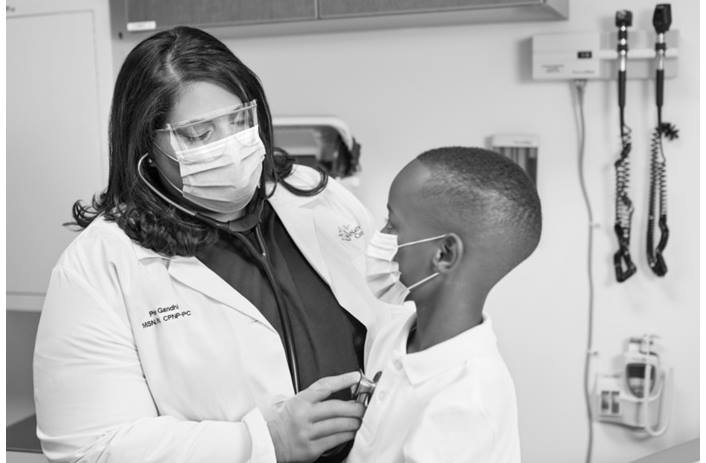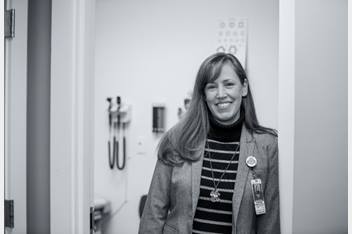How School-based Health Helps Children and Families

Ohio Gov. Mike DeWine’s announcement in March of nearly $26 million for school-based health centers has drawn new attention to this important way of reaching children who may not otherwise receive health care.
While the attention may be new, the concept isn’t. School-based health centers (SBHCs) have existed in Ohio for more than 30 years. There are approximately 150 now in operation, sponsored by hospitals, county health departments, Federally Qualified Health Centers (FQHCs) and other health care providers. Many offer the same services that can be found in a primary care pediatrician’s office: immunizations, physicals, blood work, medication prescriptions, mental health services. A growing number of school-based health centers also offer dental, vision and other “wraparound” services.
The new funding will help create 29 new school-based health centers and expand services in 107 others. According to the Ohio School-Based Health Alliance, these kinds of centers are a crucial way of helping students and their families become healthier. The centers partner with parents and other caregivers, just as a community pediatrician would, for better health.
And “healthy kids learn better,” as the motto of the Alliance says.
“SBHCs bring services to children where they are – at school, where they are spending a lot of their time,” says Julie DiRossi-King, a member of the Alliance’s board of directors. “Large cities, small towns, urban, rural, Appalachia – all regions of the state benefit from comprehensive primary and preventive care services located in schools.”
According to the Health Policy Institute of Ohio, only 54% of Ohio’s children have an established medical home, or a provider with an ongoing health care relationship with a child. Less than half of Ohio’s children covered by Medicaid have regular dental visits. Less than 40% have regular well-care visits. Half of children who fail vision screenings do not receive follow-up care.
School-based health centers help fill the gap. DiRossi-King serves as chief operating officer of the Ohio Association of Community Health Centers, which represents the state’s Federally Qualified Health Centers. Those FQHCs sponsor 85 school-based health center sites throughout the state, because they see every day that children have health needs that are not being met, says DiRossi-King.
School-based health centers, though, are not meant to take the place of a child’s existing medical home. The center does become the medical home in some cases, but in many others, school-based health professionals work to connect students with community providers. In the same way, a school-based health provider does not take the place of a school nurse – instead, they become partners in improving overall student and school health.
“A school-based health center really becomes a part of the school community,” says Mary Kay Irwin, PhD, co-vice chair of the Alliance’s board and senior director of School Health Services at Nationwide Children’s Hospital. “Providers are going to musical performances and athletic events, talking with faculty, and interacting with the students of parents. The centers are great examples of how collaborations can make a difference in the wellbeing of students."



